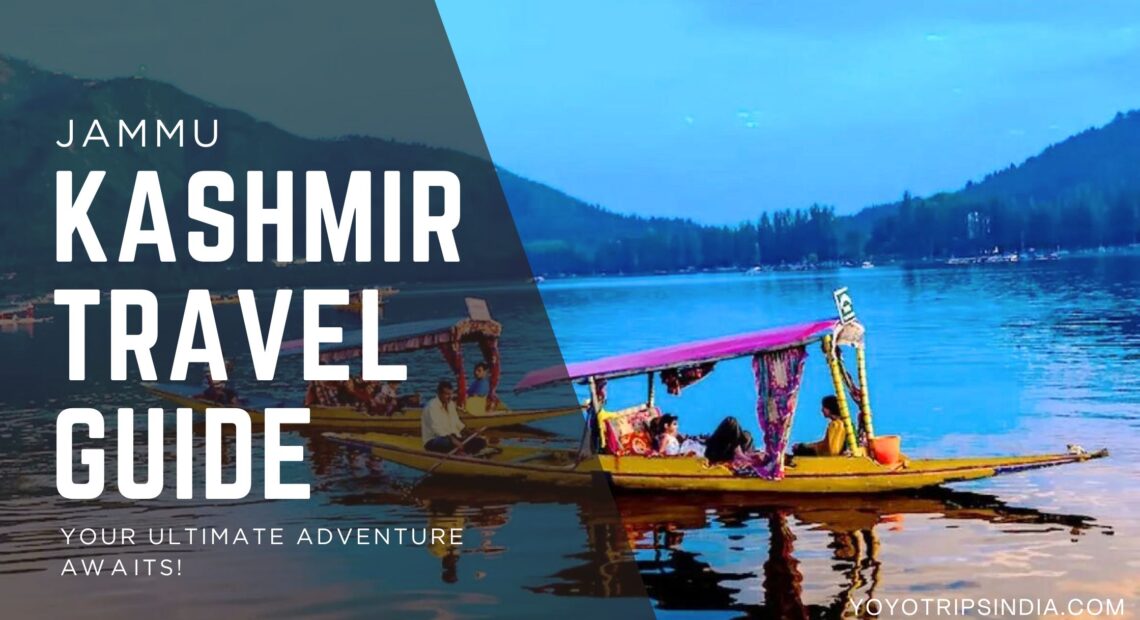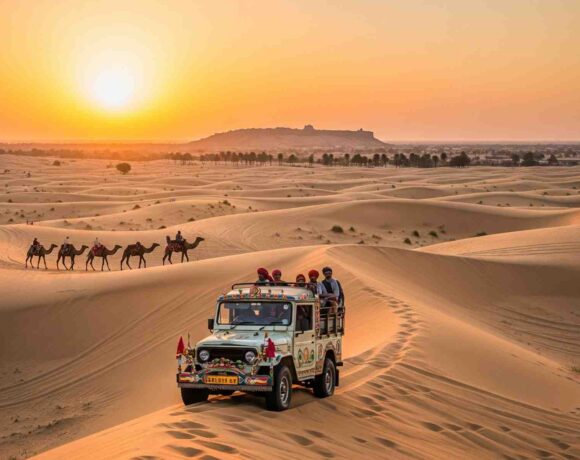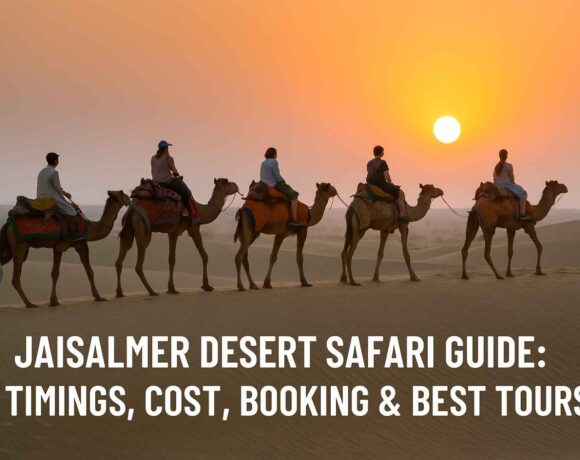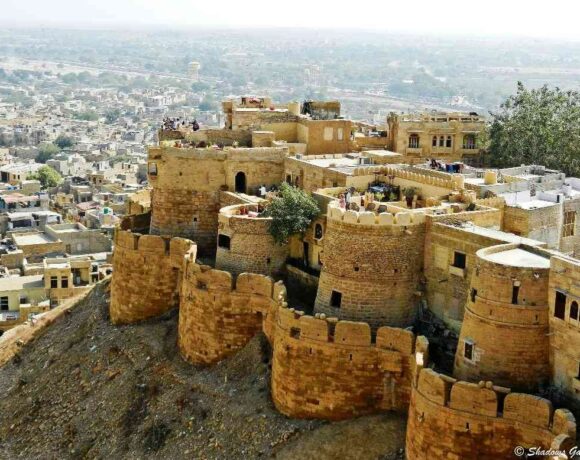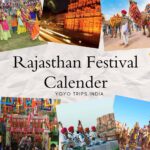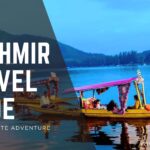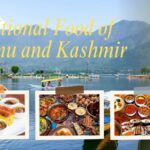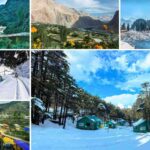Jammu and Kashmir, often hailed as “Heaven on Earth,” offers an enchanting blend of natural beauty, spiritual solace, thrilling adventures, and rich cultural experiences. This Jammu and Kashmir Travel Guide will walk you through the experience this region has to offer. Whether you’re seeking tranquility by a pristine lake, an adrenaline rush on snow-capped peaks, or a journey through ancient traditions, J&K has something for everyone.
Places to See in Jammu and Kashmir: Tourist Places
Jammu and Kashmir is diverse, offering stunning landscapes and cultural sites.
Kashmir Valley Popular Destinations (Explore our Best of Kashmir tour packages):
- Srinagar: The summer capital, famous for Dal Lake (and Nigeen Lake), Shikara rides, and houseboats. Don’t miss the Mughal Gardens (Nishat Bagh, Shalimar Bagh, Chashme Shahi, Pari Mahal), Hazratbal Shrine Mosque, and Indira Gandhi Memorial Tulip Garden (seasonal).
- Gulmarg: A renowned hill station and skiing destination. Key attractions include the Gulmarg Gondola (one of the world’s highest cable cars) and Apharwat Peak.
- Pahalgam: Known as the “Valley of Shepherds,” famous for its lush meadows, the Lidder River, and charming valleys like Behtaab Valley, Aru Valley, and Chandanwadi. It’s also the starting point for the Amarnath Yatra.
- Sonamarg: The “Meadow of Gold,” offering breathtaking views, glaciers (like Thajiwas Glacier), and opportunities for trekking and camping.
- Yusmarg & Doodhpathri: Peaceful meadows away from the main tourist crowds, ideal for relaxation and enjoying untouched beauty.
- Gurez Valley: An offbeat destination known for its historical significance and pristine beauty.
Jammu Tourist Places:
- Vaishno Devi Temple: A revered Hindu pilgrimage site in Katra.
- Raghunath Temple, Jammu: A significant temple complex.
- Bahu Fort & Bagh-e-Bahu: A historic fort with beautiful terraced gardens.
- Mansar Lake & Surinsar Lake: Popular picnic spots surrounded by hills.
Planning a trip? Don’t miss these top places to see in Jammu and Kashmir. Explore our Jammu and Kashmir tour packages to plan your perfect itinerary.
Best Time to Visit Jammu & Kashmir
Jammu and Kashmir is a year-round destination, with each season offering a unique experience:
- Spring (March to early May): Often considered the best time to visit. The valleys burst into vibrant colors with blooming flowers, including the famous Tulip Garden in April. The weather is pleasant.
- Summer (early May to late August): Ideal for sightseeing, trekking, and exploring the lush green landscapes. Temperatures are comfortable.
- Autumn (September to October): The Chinar trees turn into stunning golden, amber, and red hues, offering breathtaking scenic beauty. It’s a favorite for photographers.
- Winter (November to February): Perfect for snow lovers, offering opportunities for skiing, snowboarding, and enjoying cozy houseboat stays amidst a magical white landscape, especially in Gulmarg and Pahalgam.
Wondering when to go? Check out the best time to visit Jammu & Kashmir based on seasons and travel goals. Ready to plan? Discover our Trip to Paradise packages!
Things to Do in Jammu and Kashmir
J&K offers a wide range of activities for every type of traveler:
- Shikara Ride: A must-do on Dal Lake in Srinagar, experiencing the floating markets and serene beauty.
- Houseboat Stay: Experience life on water by staying in a traditional Kashmiri houseboat on Dal Lake or Nigeen Lake.
- Gondola Ride in Gulmarg: Take the world’s second-highest best-operating cable car for panoramic views. (Included in our Best of Kashmir tours!)
- Skiing & Snowboarding: Hit the slopes in Gulmarg during winter.
- Trekking & Hiking: Explore numerous trails like the Kashmir Great Lakes Trek, or smaller hikes in Aru, Betaab Valley, and Yusmarg.
- River Rafting: Experience the thrill of white-water rafting in the Lidder River near Pahalgam.
- Pony Rides: Enjoy scenic pony rides in places like Pahalgam and Sonamarg.
- Visit Mughal Gardens: Stroll through the historical Nishat Bagh, Shalimar Bagh, and Chashme Shahi in Srinagar.
- Attend the Tulip Festival: If visiting in April, witness the magnificent bloom at the Indira Gandhi Memorial Tulip Garden in Srinagar.
- Explore Floating Vegetable Market: Witness this unique morning market on Dal Lake.
- Spiritual Journeys: Undertake the Vaishno Devi Yatra or the Amarnath Cave pilgrimage (seasonal).
- Souvenir Shopping: Buy Pashmina shawls, saffron, handicrafts, and dry fruits.
If you are looking for more ideas? Here are the top things to do in Jammu and Kashmir, from Shikara rides to snowboarding adventures.
Indulge in local delicacies: Famous Food of Jammu and Kashmir
Jammu & Kashmiri cuisine is rich, aromatic, and unique. The most famous is the Wazwan, a multi-course meal often considered a royal feast, predominantly meat-based.
Must-Try Dishes:
- Rogan Josh: An aromatic lamb curry, a staple of Wazwan.
- Yakhni: A yogurt-based lamb or chicken curry, subtly spiced.
- Gushtaba: Soft, flavorful meatballs cooked in a creamy yogurt gravy, considered a “ dish of kings.”
- Rista: Another meatball delicacy, typically smaller than Gushtaba, in spicy red gravy.
- Dum Aloo: A popular vegtarian dish made with baby potatoes in a spicy yogurt-based gravy.
- Kashmiri Pulao: Fragrant rice cooked with saffron, dry fruits, and sometimes fresh fruit.
- Haak Saag: A simple yet flavorful dish made from collard greens.
- Kahwa: A traditional green tea infused with saffron, cardamom, cinnamon, and often garnished with almonds – a perfect warming beverage.
- Noon Chai (Pink Tea): A unique savory pink tea, often consumed for breakfast.
Foodies will love indulging in the famous food of Jammu and Kashmir like Rogan Josh, Kahwa, and Gushtaba.
Jammu and Kashmir Travel Guide Itinerary
How to Plan a Jammu and Kashmir Trip? How many days are required to visit Jammu and Kashmir? Planning your trip involves considering duration, interests and practical aspects. Here’s a breakdown for your general reference no matter whether you’re planning a 4-day trip or a 10-day adventure:
- 4-5 days: Ideal for a quick tour covering Srinagar (Dal Lake, Mughal Gardens) and day trips to Gulmarg or Pahalgam.
- 6-7 days: Recommended for a more comprehensive experience, allowing for relaxed exploration of Srinagar, Gulmarg, and Pahalgam, with a possible addition of Sonamarg or Yusmarg. This is a popular duration.
- 10+ days: If you wish to include extensive trekking (like the Kashmir Great Lakes Trek), exploration off beat valleys, or combine with a trip to Ladakh, then more than 10 days would be suitable.
Jammu and Kashmir 6 Day Itinerary
Usually typical Itinerary is 6 Days and this Jammu and Kashmir travel guide itinerary will help you explore iconic spots like Srinagar, Gulmarg, and Pahalgam.
- Day 1: Arrive in Srinagar & Shikara Ride. Arrive, check into a houseboat or hotel. In the afternoon, enjoy arelaxing Shikara ride on Dal Lake, visiting floating gardens and markets.
- Day 2: Srinagar Sightseeing. Explore Mughal Gardens (Nishat Bagh, Shalimar Bagh, Chashme Shahi), visit the Shankaracharya Temple for panoramic views, and explore local markets.
- Day 3: Day Trip to Gulmarg. Drive to Gulmarg. Enjoy the Gondola ride (Phase 1 & 2), engage in snow activities (winter) or simply soak in the meadows. Return to Srinagar.
- Day 4: Day Trip to Pahalgam. Drive to Pahalgam. Explore Betaab Valley, Aru Valley, and Chandanwadi. You can opt for pony rides. Return to Srinagar.
- Day 5: Day Trip to Sonamarg or Leisure in Srinagar. Drive to Sonamarg to witness its stunning beauty and Thajiwas Glacier. Alternatively, if preferring a relaxed day, explore more of Srinagar, perhaps visit the Tulip Garden (seasonal) or a local artisan workshop.
- Day 6: Departure from Srinagar. Enjoy a leisurely breakfast, perhaps some last-minute souvenir shopping, before heading to Srinagar airport for your departure.
Jammu and Kashmir Trip Cost Considerations:
Wondering about the Jammu and Kashmir trip cost? The cost varies widely based on your travel style, accommodation choice (budget guesthouse vs. luxury houseboat/hotel), activities, and duration. Here’s a breakdown to help you budget your perfect adventure.
- Budget (backpacking): ₹1,500 – ₹3,000 per person per day (shared accommodation, local transport, basic food).
- Mid-range: ₹3,000 – ₹7,000 per person per day (comfortable hotels, private transport, good meals).
- Luxury: ₹7,000+ per person per day (premium hotels/houseboats, private transfers, specialized experiences).
- Flights: Round-trip flights to Srinagar (SXR) from major Indian cities can range from ₹8,000 – ₹20,000+, depending on booking time and season.
- Package Tours: Many tour operators offer packages for 4-7 days ranging from ₹20,000 to ₹50,000+ per person, often including accommodation, transport, and some meals.
Essential Travel Tips for Jammu & Kashmir
To ensure a smooth and memorable trip, keep these important considerations in mind:
- Carry Valid ID: Always have a government-issued identification with you, as it may be required at checkpoints and hotels.
- Book in Advance: During peak seasons, it’s wise to pre-book accommodations and transport to avoid last-minute disappointments and secure better rates.
- Pack Accordingly: Even in summer, evenings can be cool, especially at higher altitudes. Pack layers. For winter, heavy woolens and waterproof gear are essential.
- SIM Card: Prepaid mobile SIM cards purchased in other Indian states might not work in J&K duee to security regulations. Consider carrying a postpaid SIM or purchasing a local one upon arrival.
Do’s and Don’ts: Your Guide to Responsible Travel
To ensure a respectful, safe, and enjoyable experience for everyone:
Do’s:
- Respect Local Culture: Dress modestly and adhere to local traditions, especially when visiting religious sites or rural areas.
- Be Polite and Engage: Locals are generally warm and welcoming; a polite demeanor goes a long way.
- Support Local Businesses: Purchase handicrafts and services directly from local artisans and vendors.
- Be Eco-Conscious: Help preserve the pristine beauty of Kashmir by disposing of waste responsibly and avoiding littering.
Don’ts:
- Engage in Political Discussions: It’s best to avoid political conversations with locals due to the region’s sensitive history.
- Wander Off Limits: Do not venture into unknown, restricted, or sensitive areas without a local guide or proper authorization.
- Photograph Without Permissionion: Always ask for explicit permission before taking pictures of individuals, particularly women.
- Public Displays of Affection (PDA): These are not customary in Kashmiri culture and may be considered inappropriate.
- Public Consumption of Alcohol/Drugs: This is generally frowned upon and can be illegal in certain areas.
Is it safe to travel to Jammu and Kashmir now?
Kashmir is generally considered safe for tourists. The region has seen significant improvements in security and infrastructure. Tourest areas like Srinagar, Gulmarg, Pahalgam, and Sonamarg are well-monitored, with increased police visibleity and dedicated tourist help centers. However, it’s always advisable to:
- Stay informed about local advisories from your hotel or tour operator.
- Cooperate with security personnel at checkpoints.
- Avoid venturing into very remote or sensitive areas without a local guide or prior prior information.
- Enroll in your country’s smart traveler enrollment program if you are an international traveler for security updates.
Before you embark on your dream Jammu and Kashmir adventure, let YoYo Trips India be your trusted guide! We are the Best travel agency in India, offering the best Jammu and Kashmir tour packages. From serene Shikara rides on Dal Lake to thrilling gondola rides in Gulmarg, we ensure an unforgettable experience. Browse our Jammu and Kashmir tour packages today and start planning your “Heaven on Earth” getaway!
Conclusion
In conclusion, a trip to Jammu and Kashmir is not just a vacation—it’s a journey into a realm of breathtaking landscapes, timeless traditions, spiritual serenity, and warm hospitality. Whether you’re cruising on a shikara through the serene Dal Lake, marveling at snow-covered peaks in Gulmarg, or exploring the meadows of Pahalgam and Sonamarg, each moment here is infused with awe and wonder. (Discover our Best of Kashmir tours!)
With the right planning, respect for local culture, and a spirit of adventure, Jammu and Kashmir offers a transformative travel experience—perfect for nature lovers, spiritual seekers, thrill-seekers, and cultural explorers alike. This paradise on earth truly has something for everyone. So pack your bags, embrace the mountains, and let your soul find its rhythm amidst the magic of Jammu and Kashmir. (Plan your Trip to Paradise now!)
Frequently Asked Questions
1. Is it safe to travel to Jammu and Kashmir now?
Yes, it is generally safe to travel to Jammu and Kashmir, especially in popular tourist areas like Srinagar, Gulmarg, Pahalgam, and Sonamarg. Tourists are welcomed warmly, and the hospitality of Kashmiris is world-renowned. The region has seen improved security and tourism infrastructure over recent years. However, it’s always wise to be well prepared.
2. Which month is best to visit Jammu and Kashmir?
The best time to visit Jammu and Kashmir depends on what you want to experience. But March to May (Spring/Summer) is Ideal for sightseeing, gardens, and pleasant weather. Whereas December to February (Winter) is best for snowfall, skiing in Gulmarg, and winter sports. Lastly, September to November (Autumn) has fewer crowds and golden chinar trees — a photographer’s dream. Avoid July-August for Kashmir Valley if you’re not comfortable with the Amarnath Yatra crowd or unpredictable rains.
4. How many days are required to visit Jammu and Kashmir?
A well-rounded trip to Jammu and Kashmir usually takes 5 to 7 days for Kashmir Valley highlights (Srinagar → Gulmarg → Pahalgam → Sonamarg). 8 to 10 days are required for a deeper experience including Jammu, Vaishno Devi, and offbeat places like Yumsharg or Doodhpathri. And for a quick pilgrimage trip to Vaishno Devi and Patnitop 3 to 5 days are enough. (Explore our diverse Jammu and Kashmir tour packages for different durations!)

